The Way of Saint Elmo
One of the paths to sustainability, and achievement world-wide.
Feliciano Tavares Monteiro
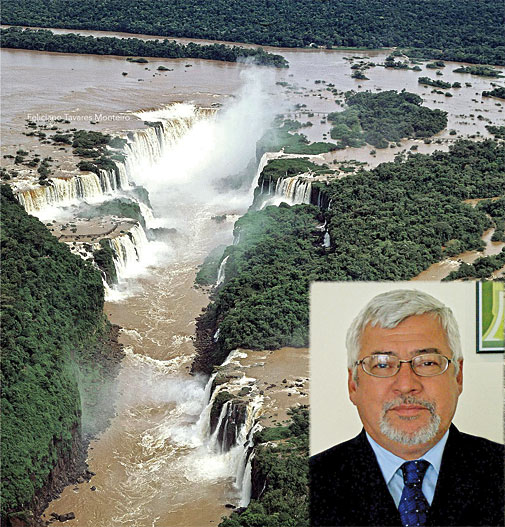
 Our information technology systems transmit images every day, almost instantaneously, and these means of information show us a natural world and a world of young people which defy outdated plans and designs drawn up with building-blocks based on equations of straight lines and right angles. These blocks fascinated scientists in the years from 1600-1900, but nevertheless they were unable to attract or impinge upon the dynamic constituents of our environment. Our information technology systems transmit images every day, almost instantaneously, and these means of information show us a natural world and a world of young people which defy outdated plans and designs drawn up with building-blocks based on equations of straight lines and right angles. These blocks fascinated scientists in the years from 1600-1900, but nevertheless they were unable to attract or impinge upon the dynamic constituents of our environment.
In nature there is nothing similar to a straight line or a 90-degree angle. Young people have participated in protest demonstrations in recent times which have outstripped all previously recorded levels. Scarcely visible to ordinary people, these protests are not at municipal, regional or national level, but rather consist of aggressive shows of defiance on an international scale, which are much more eloquent than the demonstrations of 1986. At this stage, there is no chance at all of organizing meetings at an international level close to any big city. But young people apparently refuse to accept those orthodox concepts which show signs of survival in certain political spheres and in the world of scientific sedimentation.
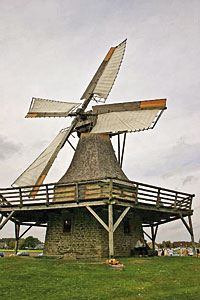 In the same way, there is no doubt that urban catastrophes are on the increase in those places where, increasingly, the water systems are put to the test. The soil is moved, modifying the course of the rivers and creating little streams to flow into the riverbeds at right-angles. This is in defiance of the ways and rules of nature. On the other hand, wars are never off the agenda, and aid for social and environmental programs is systematically reduced or differed. Everywhere we witness an increase in arrests and political repression, in a vain attempt to isolate world leaders from the real world, or rather from the citizens placed under their jurisdiction. It is a solitary and isolating path. In the same way, there is no doubt that urban catastrophes are on the increase in those places where, increasingly, the water systems are put to the test. The soil is moved, modifying the course of the rivers and creating little streams to flow into the riverbeds at right-angles. This is in defiance of the ways and rules of nature. On the other hand, wars are never off the agenda, and aid for social and environmental programs is systematically reduced or differed. Everywhere we witness an increase in arrests and political repression, in a vain attempt to isolate world leaders from the real world, or rather from the citizens placed under their jurisdiction. It is a solitary and isolating path.
The large cities of the Americas are an example of this, where solutions are deemed necessary which involve constructing dykes on the hillsides and diverting the course of streams, the waste water and rainwater. However, when such solutions are introduced and negotiated they rarely produce a positive balance of energy. It is very likely that the energy consumed in pumping urban waste water is in some cases superior to the energy used in school buildings. In addition, in those places where the big oil companies are located, the regulatory system is in general tragically violated, for the energy extracted from these locations rarely responds to the needs, in terms of heating, of the people who live around these huge concerns.
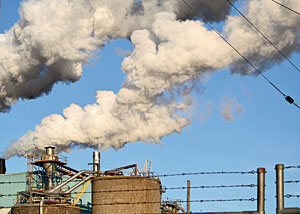 In a world of prey and predators, however incredible it may seem, it is clear to behold in the cities and neighborhoods that there is no longer time to hold these phenomena in check: to design them, plan them or work them out. The responses that both nature and the young people of the 21st century demand, without the use of detailed analysis or static representations, indicate the need to see the matter from the point of view of the guinea-pigs. There is one matter about which we cannot procrastinate indefinitely: properly known as the whole planet. In a world of prey and predators, however incredible it may seem, it is clear to behold in the cities and neighborhoods that there is no longer time to hold these phenomena in check: to design them, plan them or work them out. The responses that both nature and the young people of the 21st century demand, without the use of detailed analysis or static representations, indicate the need to see the matter from the point of view of the guinea-pigs. There is one matter about which we cannot procrastinate indefinitely: properly known as the whole planet.
Therefore, we are impelled not only to consider bodies and forms in mass when trying to interpret natural phenomena. It is, in fact, unavoidable that we should start to value, above all else, the energy contained in these phenomena, or emitted by species in their habitat, since energy consists principally of the dynamic content of organisms put to the test.
 The ill-omened occurrences in Haiti serve to highlight the fragility of a nation without proper water systems, refuse collection, or lighting, and illustrate how that country has been conditioned to try to survive without energy production. The earthquake brought up not just volcanic lava, but also some of the most burning issues involving the United Nations. The ill-omened occurrences in Haiti serve to highlight the fragility of a nation without proper water systems, refuse collection, or lighting, and illustrate how that country has been conditioned to try to survive without energy production. The earthquake brought up not just volcanic lava, but also some of the most burning issues involving the United Nations.
To our neglect or ignorance of the long journey that man has made from fire to nuclear fusion can be added our total ignorance regarding post-modern concepts of energy efficiency. Yet this is something that even a frog or a lizard understands: the former because he uses his tongue to hunt, without needing to burn up calories running after his prey, and the latter because he sits quietly sunbathing when there is no food for him moving around in his vicinity. According to J. Goldemberg, both these creatures have a lot to teach us when it comes to saving energy.
Pirates and sailors on colonial vessels, frequent visitors to the Isla Spaniola, lived at a time when science and witchcraft still lived in close co-existence. Amongst the torments of those aboard was the fear of St. Elmo’s fire which, from the twentieth century onwards has been recognized as an energy phenomenon known as the Corona Effect. (The emission of electrons by means of high tension electrodes, when they clash with the atoms of the dielectric adjacent to the electrode. The clash provokes the release of new electrons, giving rise to a process known as Valanga Townsend.)
Retracing this path of energy evolution step by step, one is forced to the conclusion that man has not survived on this planet because he is the strongest, fastest or most attractive species. He has survived because he has adapted to his environment. This has only been possible as a result of scientific study and the technological application of various methods of energy absorption aimed at acquiring and maintaining those calories which finally, are what keep the human species alive.
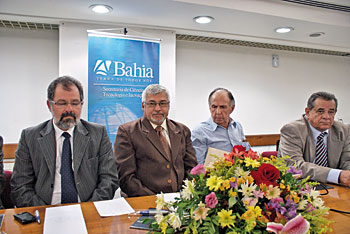 However, there is a pressing need for a way of teaching to summarize the steps made in energy discovery and the progress achieved, presenting this issue as a matter of special interest to university students, business proprietors, and men of goodwill. For lack of another name, it could be called the Ener-Way. The Ener-Way would consist of brief descriptions of how to make fire, how to power turbines or windmills, and even some examples of production plans for nuclear energy, and obviously would include such topics as the corona effect and other energy phenomena. This way should consist of 81 teaching stations: at each of these there could be energy observatories where either the curious traveler or the passionate scientist would be able to trace the long journey of mankind’s energy evolution. However, there is a pressing need for a way of teaching to summarize the steps made in energy discovery and the progress achieved, presenting this issue as a matter of special interest to university students, business proprietors, and men of goodwill. For lack of another name, it could be called the Ener-Way. The Ener-Way would consist of brief descriptions of how to make fire, how to power turbines or windmills, and even some examples of production plans for nuclear energy, and obviously would include such topics as the corona effect and other energy phenomena. This way should consist of 81 teaching stations: at each of these there could be energy observatories where either the curious traveler or the passionate scientist would be able to trace the long journey of mankind’s energy evolution.
Feliciano Tavares Monteiro is an electrical engineer and top executive of SECTI, the official technological agency in the State of Bahía (Brazil). He also manages his own personal internet site:
www.sinodomeio.com.br.
|
 NUMBER 9
NUMBER 9
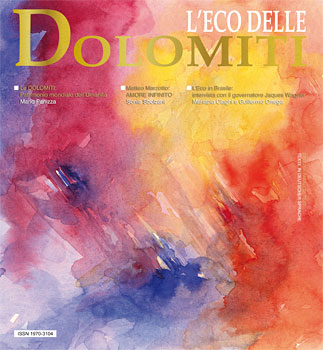

 Our information technology systems transmit images every day, almost instantaneously, and these means of information show us a natural world and a world of young people which defy outdated plans and designs drawn up with building-blocks based on equations of straight lines and right angles. These blocks fascinated scientists in the years from 1600-1900, but nevertheless they were unable to attract or impinge upon the dynamic constituents of our environment.
Our information technology systems transmit images every day, almost instantaneously, and these means of information show us a natural world and a world of young people which defy outdated plans and designs drawn up with building-blocks based on equations of straight lines and right angles. These blocks fascinated scientists in the years from 1600-1900, but nevertheless they were unable to attract or impinge upon the dynamic constituents of our environment.  In the same way, there is no doubt that urban catastrophes are on the increase in those places where, increasingly, the water systems are put to the test. The soil is moved, modifying the course of the rivers and creating little streams to flow into the riverbeds at right-angles. This is in defiance of the ways and rules of nature. On the other hand, wars are never off the agenda, and aid for social and environmental programs is systematically reduced or differed. Everywhere we witness an increase in arrests and political repression, in a vain attempt to isolate world leaders from the real world, or rather from the citizens placed under their jurisdiction. It is a solitary and isolating path.
In the same way, there is no doubt that urban catastrophes are on the increase in those places where, increasingly, the water systems are put to the test. The soil is moved, modifying the course of the rivers and creating little streams to flow into the riverbeds at right-angles. This is in defiance of the ways and rules of nature. On the other hand, wars are never off the agenda, and aid for social and environmental programs is systematically reduced or differed. Everywhere we witness an increase in arrests and political repression, in a vain attempt to isolate world leaders from the real world, or rather from the citizens placed under their jurisdiction. It is a solitary and isolating path.  In a world of prey and predators, however incredible it may seem, it is clear to behold in the cities and neighborhoods that there is no longer time to hold these phenomena in check: to design them, plan them or work them out. The responses that both nature and the young people of the 21st century demand, without the use of detailed analysis or static representations, indicate the need to see the matter from the point of view of the guinea-pigs. There is one matter about which we cannot procrastinate indefinitely: properly known as the whole planet.
In a world of prey and predators, however incredible it may seem, it is clear to behold in the cities and neighborhoods that there is no longer time to hold these phenomena in check: to design them, plan them or work them out. The responses that both nature and the young people of the 21st century demand, without the use of detailed analysis or static representations, indicate the need to see the matter from the point of view of the guinea-pigs. There is one matter about which we cannot procrastinate indefinitely: properly known as the whole planet.  The ill-omened occurrences in Haiti serve to highlight the fragility of a nation without proper water systems, refuse collection, or lighting, and illustrate how that country has been conditioned to try to survive without energy production. The earthquake brought up not just volcanic lava, but also some of the most burning issues involving the United Nations.
The ill-omened occurrences in Haiti serve to highlight the fragility of a nation without proper water systems, refuse collection, or lighting, and illustrate how that country has been conditioned to try to survive without energy production. The earthquake brought up not just volcanic lava, but also some of the most burning issues involving the United Nations.  However, there is a pressing need for a way of teaching to summarize the steps made in energy discovery and the progress achieved, presenting this issue as a matter of special interest to university students, business proprietors, and men of goodwill. For lack of another name, it could be called the Ener-Way. The Ener-Way would consist of brief descriptions of how to make fire, how to power turbines or windmills, and even some examples of production plans for nuclear energy, and obviously would include such topics as the corona effect and other energy phenomena. This way should consist of 81 teaching stations: at each of these there could be energy observatories where either the curious traveler or the passionate scientist would be able to trace the long journey of mankind’s energy evolution.
However, there is a pressing need for a way of teaching to summarize the steps made in energy discovery and the progress achieved, presenting this issue as a matter of special interest to university students, business proprietors, and men of goodwill. For lack of another name, it could be called the Ener-Way. The Ener-Way would consist of brief descriptions of how to make fire, how to power turbines or windmills, and even some examples of production plans for nuclear energy, and obviously would include such topics as the corona effect and other energy phenomena. This way should consist of 81 teaching stations: at each of these there could be energy observatories where either the curious traveler or the passionate scientist would be able to trace the long journey of mankind’s energy evolution.